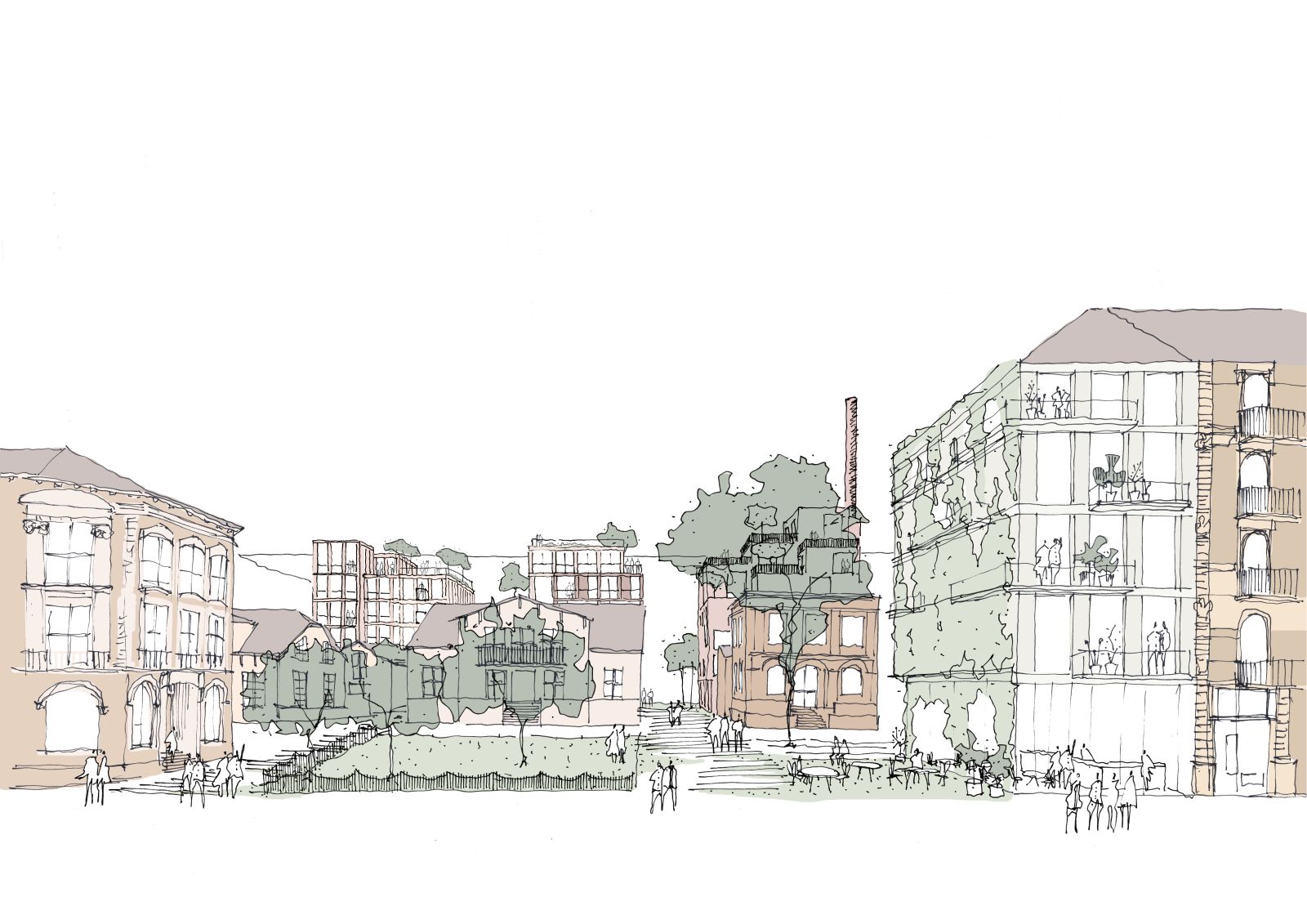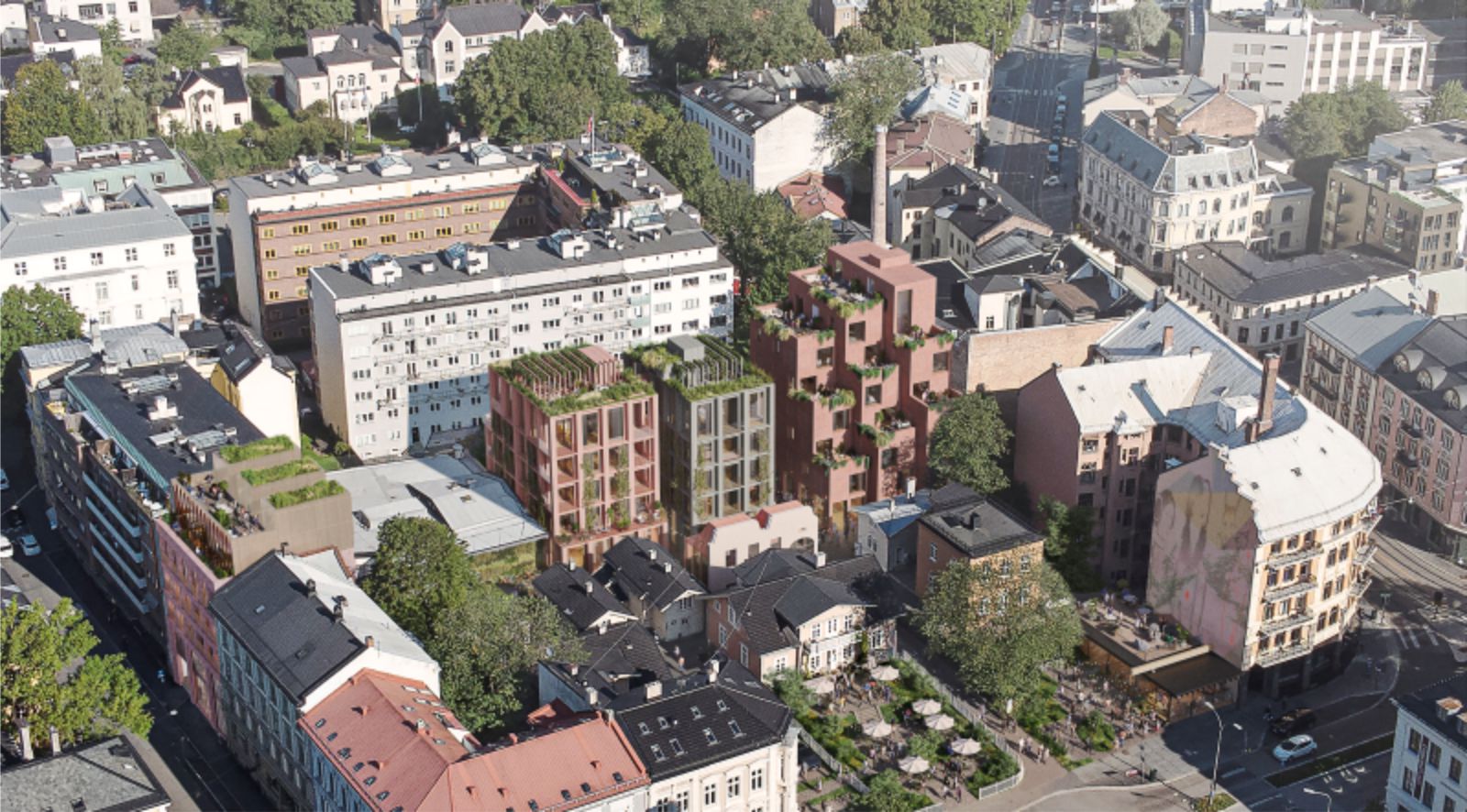Reiulf Ramstad Arkitekter’s winning proposal for Parkveien 27-31, a precise architectural operation in an urban city block behind the Royal Palace in Oslo’s Lille Uranienborg quarter, has revived an important project that had been embroiled in controversy.
The proposal incorporates a wide array of voices, needs, and perspectives, and features a seamless integration of modern design principles with the historical preservation of several multi-storied housing buildings, reflecting the firm’s deep understanding of the community’s needs and the city’s rich heritage.

Situated in the historic Frogner neighborhood, the Parkveien project presented a unique challenge. It required the redevelopment of an eclectic and aging city block composed of buildings from different eras, while ensuring the preservation of its cultural significance and historical essence.
Reiulf Ramstad Arkitekter’s proposal for the site showcased the firm’s ability to balance the demands of the past with the requirements of the present. Recently, Aftenposten, Norway’s largest printed newspaper, addressed one of the most significant aspects of the proposal, namely its unwavering commitment to social involvement.

From the outset, the architects collaborated extensively with local residents, community leaders, and historical experts, valuing their insights and preferences. This collaborative approach not only fostered a sense of ownership among the stakeholders but also ensured that the development would serve as a welcoming space for all, enriching the social fabric of the neighborhood.
The result is a multifunctional space that seamlessly blends residential units, commercial areas, and public spaces, incorporating green spaces, playgrounds, and communal areas to further enhance the sense of community and encourage social interactions. The design preserves the core of the historical buildings, while using innovative techniques and modern elements that complement the existing structures.

This delicate surgical approach to the design ensures that the neighborhood’s historical character remains intact while embracing the functionality required for contemporary living. Beyond its structural innovation, the Parkveien project’s eco-friendly features include renewable energy sources, green roofs, and efficient waste management systems that will significantly reduce its carbon footprint, aiming to set an inspiring example for future urban projects.
In the context of Oslo’s current densification challenge, which arises from its quickly growing population and the related increase in demand for urban development, it is essential for architects to create precise, thoughtful architecture that builds higher and denser rather than spreading outward.

As with other complex projects tackled by Ramstad Arkitekter, such as Korsgata 5, Vøyensvingen 10, and Sagene Wood Trade, the design for Parkveien 27-31 offers a smart, innovative solution for repurposing and breathing new life into leftover spaces that already populate the urban fabric.
Located in the affluent neighbourhood of Uranienborg, the site sits at a prominent corner of Slottsparken and is hemmed in by 4 of the city’s most important commercial streets, forming an attractive urban block. Within this block, today we find the wide variety of architectural forms that give Oslo its unique character – from the low-rise timber houses of the former palace stables to the 19th century stuccoed town houses, to the more robust brick apartment blocks, or ‘funkis’ (functionalist architecture) of the mid-20th century.

Instead we proposed a series of interventions that would not work against the informal nature of the site, and indeed draws on the multitude of Oslo’s built forms to create a human friendly and pleasant neighbourhood that is ‘of its place’. The proposal sees it as important to invest in good public spaces, varied urban forms such as arcades and squares, as well as green space in the form of fruit tree gardens.
This variety of new spaces and typologies offers a kind of intensification of human activities in the neighbourhood that increases its potential as a cultural node of Oslo. Most notably it is the adoption of the unique Oslo built form of the ‘basaren’ or bazar as the public focal point of the new development. The integration of a clearly defined lateral route across the currently impenetrable city block will create a more permeable, active and walkable quarter of the city. Source by Reiulf Ramstad Arkitekter.

- Location: Oslo, Norway
- Architect: Reiulf Ramstad Arkitekter
- Client: Aspelin Ramm / Bertel O Steen Eiendom
- Program: Mixed-use, cultural, offices, housing
- Size: 22,000 m2
- Commission type: Invited competition (2019)
- Images: Courtesy of Reiulf Ramstad Arkitekter




